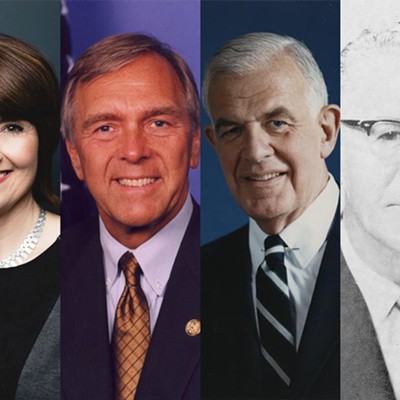Now that Leonardo DiCaprio has played Jay Gatsby on the big screen, it’s easy to imagine Gatsby as a kind of continuation of Jack Dawson from the film Titanic. Gatsby has a mysterious backstory, and even the time frame matches up — Titanic sank in 1912, The Great Gatsby is set a decade later. Maybe Jack survived, changed his identity and moved out to West Egg? It’s a fun literary diversion.
The Great Gatsby is the Great American Novel; Titanic is one of the most popular movies of all time. Both lead characters grapple with the American Dream. Jay Gatsby lost his beloved Daisy to a wealthier man, so he set out to become richer than Midas. But when he finally gets close to Daisy again, he’s wistful. She became just another bauble — the shiny green light from across the bay that he had to have. Once the pursuit was over, and it wasn’t quite what he expected, he was left with the kind of emptiness that attends too much desire.
The quest for more, more, more that characterized American life in 1922 (and today) is a central theme in F. Scott Fitzgerald’s work. And it’s why we keep reading his understated masterpiece.
DiCaprio’s Jack Dawson, meanwhile, is poor and perfectly happy to stay that way. As he tells Molly Brown over dinner: “I got everything I need right here with me. I got air in my lungs, a few blank sheets of paper. I mean, I love waking up in the morning not knowing what’s gonna happen or who I’m gonna meet, where I’m gonna wind up.”
That’s James Cameron channeling Jack Kerouac and plopping him — for maximum literary effect — right in first class with the Astors and the Guggenheims. Jack is the flip side of Jay; he’s content with what little he has, not obsessed with what he doesn’t. Jack’s true freedom captivates his dining companions. But Rose is the only one to follow Jack’s lead; she ditches her money-grubbing fiancé and goes on to live an exciting life.
Jack’s American Dream is overly idealized, for sure, but if you can add a little bit of that secret Dawson/Kerouac ingredient, Cameron says your life will be sweeter.
Fitzgerald and Cameron agree that money can’t buy you love or happiness. But we do know that money does fuel the kinds of great parties, lavish lifestyles, doomed ships and raw hubris that make for the best works of art. Jay and Jack are two sides of the American coin — strivers who use their freedom to reinvent themselves, for better or worse. Their tragedies force us to think.
“So we beat on, boats against the current, borne back ceaselessly into the past.” That’s Fitzgerald’s last line in The Great Gatsby, and it reads like a challenge. This is art. Its lessons are eternal. Learn from it.





















